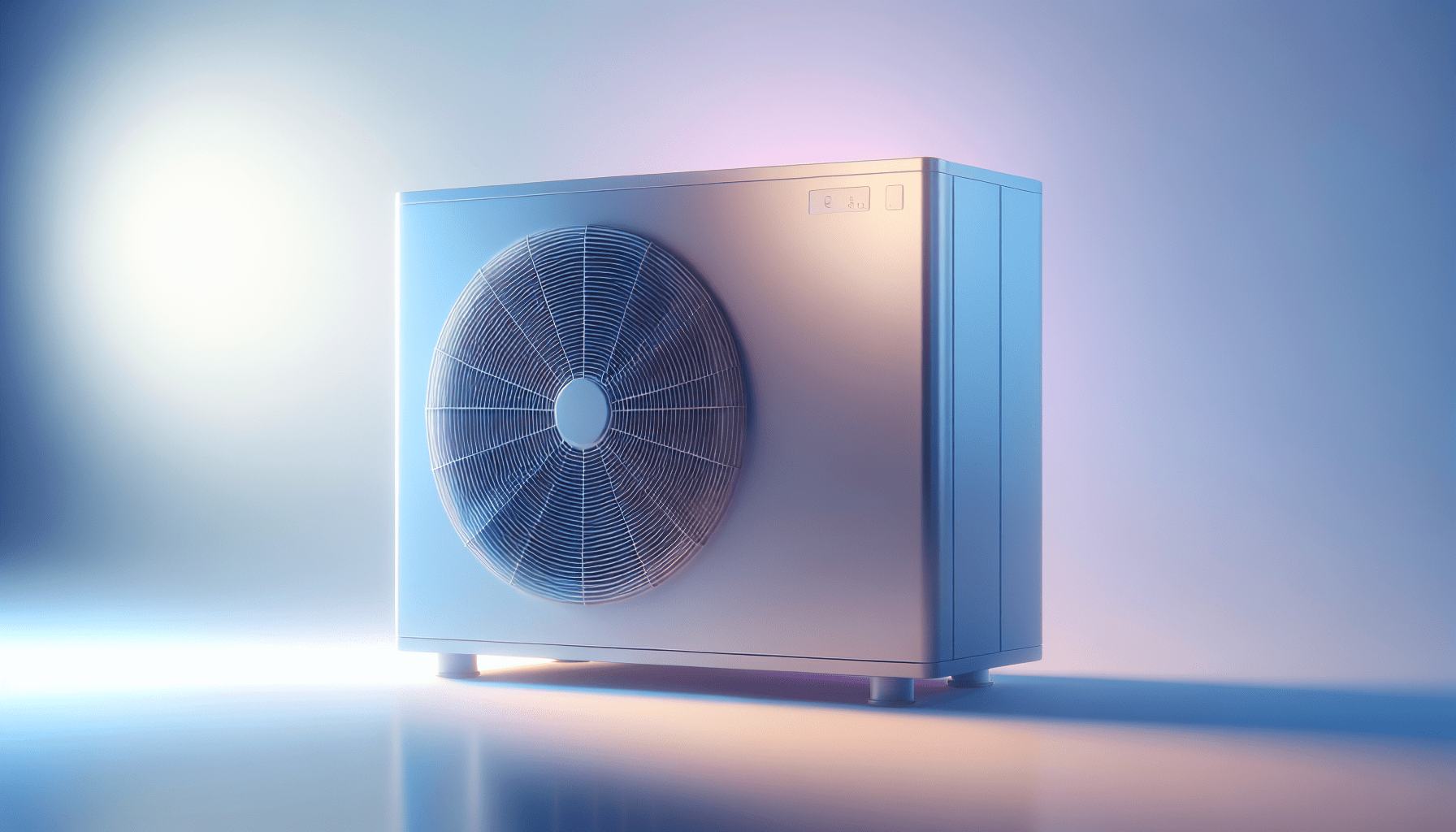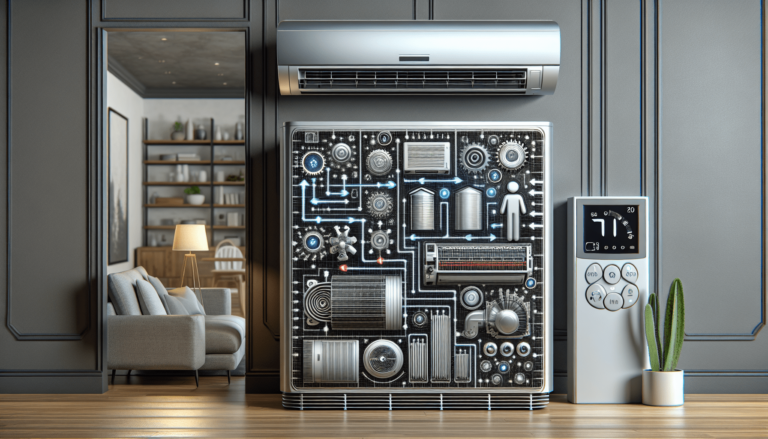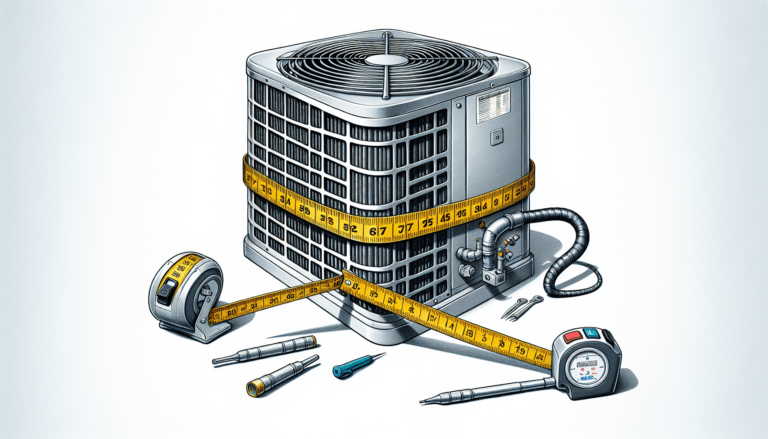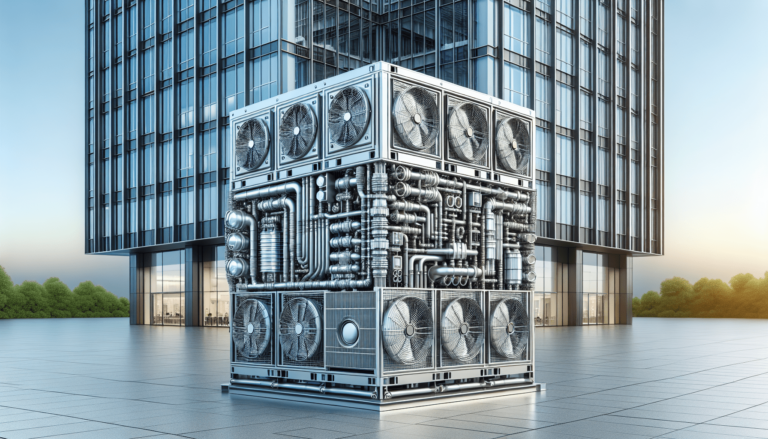

HVAC Services
Get Professional Repairs From The Area's Trusted HVAC Technicians. Ask About Our Services! We Offer Professional Heating & Cooling System Repairs And Guarantee Long-Lasting Results.
Got Question? Call us: (850) 678-2665Financing
UV Lights In HVAC: Pros, Cons, And Purpose
Discover how UV lights in HVAC systems can impact your indoor air quality. Learn the pros, cons, and purpose of this technology in an entertaining yet informative way.

Have you ever considered how UV lights in HVAC systems could impact your indoor air quality? It’s an interesting topic that’s worth looking into.
UV Lights In HVAC: Pros, Cons, And Purpose
The Basics of UV Lights
Ultraviolet (UV) lights are a type of electromagnetic radiation. You’re probably most familiar with them as the culprit behind sunburns, but they’re used in various applications from sterilizing medical equipment to purifying water. They also have a special place in heating, ventilation, and air conditioning (HVAC) systems.
Why UV Lights in HVAC?
UV lights integrated into HVAC systems act as a method of air purification. These lights are designed to neutralize airborne pathogens, mold, and other contaminants. Installing UV lights in your HVAC system can lead to cleaner air, which is a boon if you or someone in your household suffers from allergies or other respiratory issues.
Purpose of UV Lights in HVAC Systems
The primary purpose of UV lights in HVAC systems is to improve indoor air quality. How do they do that? By breaking down potentially harmful microorganisms that can float around your home. Think of these lights as bouncers at a club, not letting the bad guys in.
Pros of Using UV Lights in HVAC Systems
Health Benefits
One of the biggest pros is the potential health benefits. UV lights can help reduce the spread of bacteria and viruses within indoor environments. This is particularly beneficial for people with respiratory ailments or compromised immune systems.
Reduced Mold and Allergens
If mold is the unwelcome guest in your HVAC system, UV lights can help evict it. Mold and allergens can trigger respiratory issues and allergic reactions. UV light can effectively diminish these threats.
Lower Energy Costs
Believe it or not, UV lights can help make your system more energy-efficient. How? By keeping the coils clean, which reduces the workload on your HVAC system, leading to potential cost savings on your energy bill.
Extended Lifespan of HVAC System
Another plus is the extended lifespan of your HVAC system. Cleaner coils and fewer contaminants can make the system run more smoothly and efficiently, potentially adding years to its lifespan.
Cons of Using UV Lights in HVAC Systems
Initial Cost
One downside to UV lights in HVAC systems is the initial investment. The cost can be a bit steep, especially when you factor in installation. However, many find that the long-term benefits outweigh the initial expense.
Maintenance
While UV lights don’t require overly frequent maintenance, they do need to be replaced periodically to remain effective. Failing to do so can render them useless, thereby not providing the benefits you installed them for in the first place.
Limited Scope
UV lights are incredibly effective at killing microorganisms, but they have their limitations. They won’t filter out larger particles like dust, so you will still need other air purifying methods.
Potential Safety Concerns
Although rare, there are some safety concerns with UV lights. Direct exposure can be harmful to the eyes and skin, so proper installation and handling are crucial.
| Pros | Cons |
|---|---|
| Improved indoor air quality | High initial cost |
| Health benefits | Regular maintenance required |
| Reduced mold and allergens | Limited to killing microorganisms |
| Lower energy costs | Potential safety concerns |
| Extended HVAC lifespan |
How UV Lights Work in HVAC Systems
UV lights are usually installed near the coils in the HVAC system. When the air passes through the coils, it also passes by the UV light. The UV light disrupts the DNA of microorganisms, effectively neutralizing them.

Are UV Lights Safe?
Safety is always a concern when dealing with any form of radiation. Fortunately, UV lights used in HVAC systems are generally considered safe as long as they are properly installed and maintained. The lights are contained within the HVAC system, so the risk of direct exposure is minimal.
UV Light Installation Process
Installing UV lights in your HVAC system is not a DIY project. It’s essential to engage a professional for this task. Proper installation ensures not only safety but also the effectiveness of the UV light system.
Cost of UV Light Installation
The cost can vary depending on the type of UV light system you choose and the complexity of the installation. On average, you might spend anywhere from $150 to $500 for the light itself and another $100 to $300 for professional installation.
Comparing Different Types of UV Lights
There are several types of UV lights that you can install in your HVAC system, each with its unique features and benefits. Here’s a quick comparison:
| Type | Description | Best For |
|---|---|---|
| Coil Sterilization | Installed on the indoor coil for surface sterilization | Homes with mold issues |
| Air Sterilization | Installed in the return air duct | General air purification |
| Portable | Smaller units that can be moved from room to room | Small spaces or temporary needs |
UV Lights and Allergies
Allergies can be a deal-breaker for many people. The good news is that UV lights in your HVAC system can help reduce common allergens. By killing mold spores and bacteria, these lights can help reduce allergy symptoms.
UV Lights and Respiratory Health
If you or someone in your household has respiratory issues, UV lights can be a game-changer. By reducing airborne contaminants, UV lights can help make breathing easier and more comfortable.

Energy Efficiency and UV Lights
One often overlooked benefit of UV lights is their potential to improve your HVAC system’s energy efficiency. When the coils are clean, the system doesn’t have to work as hard, leading to lower energy consumption.
Comparing UV Lights to Other Air Purifiers
You might be wondering how UV lights stack up against other air purification methods like HEPA filters or ionizers. Here’s a comparison:
| Feature | UV Lights | HEPA Filters | Ionizers |
|---|---|---|---|
| Airborne Microorganisms | Very Effective | Moderately Effective | Effective |
| Dust and Pollen | Less Effective | Very Effective | Moderately Effective |
| Energy Efficiency | High | Moderate | Low |
| Maintenance | Moderate | High | Moderate |
| Initial Cost | Moderate | High | Low |
Tips for Choosing UV Lights
- Determine Your Needs: Think about the specific issues you want to address, whether it’s mold, general air purification, or something else.
- Types of UV Lights: Consider the different types and what they specialize in.
- Professional Installation: Always opt for professional installation.
- Maintenance: Be prepared for the regular maintenance and replacement of UV bulbs.
Common Misconceptions about UV Lights
It’s easy to fall prey to common misconceptions about UV lights. One of the biggest is that they will eliminate all indoor air problems. While they’re effective at killing microorganisms, you’ll still need other filtration methods for a comprehensive solution.
Environmental Impact of UV Lights
Using UV lights in your HVAC system may also have a minimal environmental impact. Because they can help your system run more efficiently, you might find that your overall energy consumption decreases.
How Often Should You Replace the UV Light?
This can vary depending on the type of UV light and how often your HVAC system runs. Generally, UV lights should be replaced every 12-24 months. Check the manufacturer’s guidelines for specific recommendations.
Health Precautions with UV Lights
While UV lights are enclosed within your HVAC system and pose minimal risk, it’s good to be aware of any potential issues. Always consult professionals for installation to minimize risks.
Case Studies: Successful UV Light Implementation
Case Study 1: A Residential Home
A family in Niceville, FL, decided to install UV lights in their HVAC system due to recurring mold problems. Within three months, they reported significantly reduced mold and improved air quality, leading to fewer allergy symptoms.
Case Study 2: An Office Building
An office building faced high levels of employee absenteeism due to respiratory illnesses. After installing UV lights in their HVAC system, there was a noticeable decrease in sick days, attributed to cleaner air quality.
Future Trends in HVAC UV Lights
The technology behind UV lights is continually evolving. Future trends may include more energy-efficient designs, improved effectiveness, and easier maintenance options.
Is It Worth the Investment?
UV lights in HVAC systems can be a significant investment but for many, the benefits far outweigh the costs. Improved air quality, reduced allergens, and lower energy bills can make it a worthwhile expenditure.
Frequently Asked Questions
Q: Can I install UV lights myself?
A: It’s strongly recommended to hire a professional for installation to ensure safety and effectiveness.
Q: How do UV lights compare to traditional air purifiers?
A: UV lights are very effective at killing microorganisms but don’t capture larger particles like dust. A combination of both might be ideal.
Q: Are UV lights harmful to pets?
A: Generally no, as the UV light is contained within the HVAC system.
Q: Can UV lights reduce energy costs?
A: Yes, by keeping the coils clean and making your HVAC system more efficient.
Conclusion: Weighing the Pros and Cons
UV lights in HVAC systems can provide numerous benefits, from improving air quality to prolonging the life of your HVAC system. However, they come with costs and maintenance requirements. By weighing the pros and cons, you can decide if this technology is the right fit for your home or office.
If you’re in Niceville, FL, and are considering adding UV lights to your HVAC system, you might want to give Tempacure Heating and Air Conditioning a call at (850) 678-2665 or visit their website at tempacurehvac.com.







